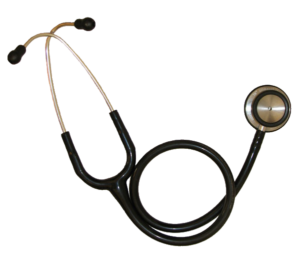 Some people have unexplainable or mystery illnesses - whether it is unknown what exactly they have, but also how to treat the rare disease. And if somehow a doctor figures out how to treat the disease, then they may not know how to get the word out to other medical professionals. But it turns out there is a way to tell others this valuable information - CURE ID.
Some people have unexplainable or mystery illnesses - whether it is unknown what exactly they have, but also how to treat the rare disease. And if somehow a doctor figures out how to treat the disease, then they may not know how to get the word out to other medical professionals. But it turns out there is a way to tell others this valuable information - CURE ID.
It turns out that within the FDA there is federal official Heather Stone who has worked tirelessly on this problem - that is, to help doctors find new treatments for rare, deadly diseases. A site and app called CURE ID has been developed by her small team to collect such stories (it collects stories because studies haven't been done). To keep it in perspective - there are about 10,000 known rare diseases.
The following tells the incredible story of a devastating mystery disease (brain-eating amoeba called Balamuthia) in a young girl, a treatment that finally worked, and the role that CURE ID could play in the future. CURE ID is especially interested in repurposing existing medicines, that is, using medicines already in existence, but now for rare diseases (this would be an off-label use).
Excerpts from Michael Lewis's article in the Washington Post: The free-living bureaucrat
"...The FDA couldn’t allow just anyone to post anything. CURE ID — as the site and app became known — needed to be at least lightly refereed to keep the kooky stuff out. The point was to collect the stories that weren’t collected in medicine because they were stories, not science. Case studies, not randomized controlled trials. “Most journals won’t publish case reports because they don’t think they are valuable because they are merely anecdotes,” Heather said. For rare diseases, these anecdotes were all you had to go on, and some of them certainly had value — even if they told you about some treatment that had failed. You didn’t want people saying you could cure covid by drinking bleach. But short of that, what doctors had done with patients dying from rare diseases, and how those patients responded, had obvious value."
"But that really isn’t the end of the story. The healing of Alaina Smith is just a single unfinished case study, and there’s no telling how it will end. The whole thing feels like a miracle, but if all our systems had worked the way they should work, there’d have been no need for miracles. In San Francisco, a researcher at one of the leading medical research centers in the world finds a new and promising treatment for a rare and deadly disease. Three years later, in Dallas, a little girl with the disease walks into one of the leading hospitals in the country.
Between those two events, a woman inside the federal government who was as good as born for the job creates a tool to let doctors anywhere in the world know what others anywhere else in the world have discovered. And yet the doctors in San Francisco and Dallas, like the doctors most everywhere else, neglected the tool, in part because it doesn’t pay but also because it was created by the federal government. It’s as if a society had been handed a mechanism for saving itself but had a built-in rule against using the mechanism. Heather Stone helped to save Alaina Smith, but the tool she created played no role at all — which doesn’t sound like a big deal. But then it also failed to play a role in the treatment of a 4-year-old girl in Northern California, an hour’s drive from Joe DeRisi’s lab, who contracted Balamuthia not long after Alaina Smith was saved, and who died because her doctors learned of the possible cure too late."
